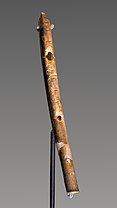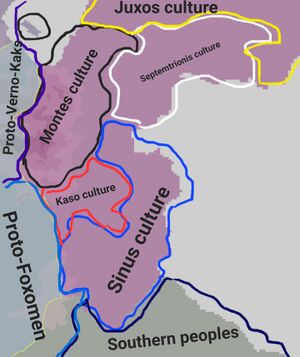Stone Age of Kakland: Difference between revisions
(Created page with "The '''Stone Age of Kakland''', or the '''Kakish Stone Age''', was a period of time of Kakland beginning with the arrival of the first humans around 1.7 million years to the a...") |
No edit summary |
||
| Line 13: | Line 13: | ||
[[File:Screenshot 20221218-233012 Photos.jpg|thumb|The culture groups of Kakland and surrounding areas, circa 25,000 bce]] | [[File:Screenshot 20221218-233012 Photos.jpg|thumb|The culture groups of Kakland and surrounding areas, circa 25,000 bce]] | ||
Around 20,000 bce, a new wave of Germanic peoples, the Verno-Kak peoples, went east into central and northern Kakland pushing out the current Germanic groups south and farther north into Juxland. | |||
Revision as of 06:03, 19 December 2022
The Stone Age of Kakland, or the Kakish Stone Age, was a period of time of Kakland beginning with the arrival of the first humans around 1.7 million years to the arrival of modern anatomical humans around 30,000 bce in the Paleolithic and ending with the start of the Chalcolithic in 2000 bce.
Lower Paleolithic
The first evidence of human settlement of Kakland occurred west of the Nenan Mountains in central Kakosia with the advent of early stone tools. The first early humans were Homo erectus and Homo heidelbergensis, and later Homo neanderthalensis.
Upper Paleolithic

Modern humans arrived in Kakland around 30,000 with the early Germanic tribes traveling from Thuadia, forming several cultures throughout Kakland. Some major cultures include the Septemtrionis and Montes cultures. Some of these early groups used stone and bone pointed spears and arrowheads, as well as flint blades.
Around 20,000 bce, a new wave of Germanic peoples, the Verno-Kak peoples, went east into central and northern Kakland pushing out the current Germanic groups south and farther north into Juxland.

